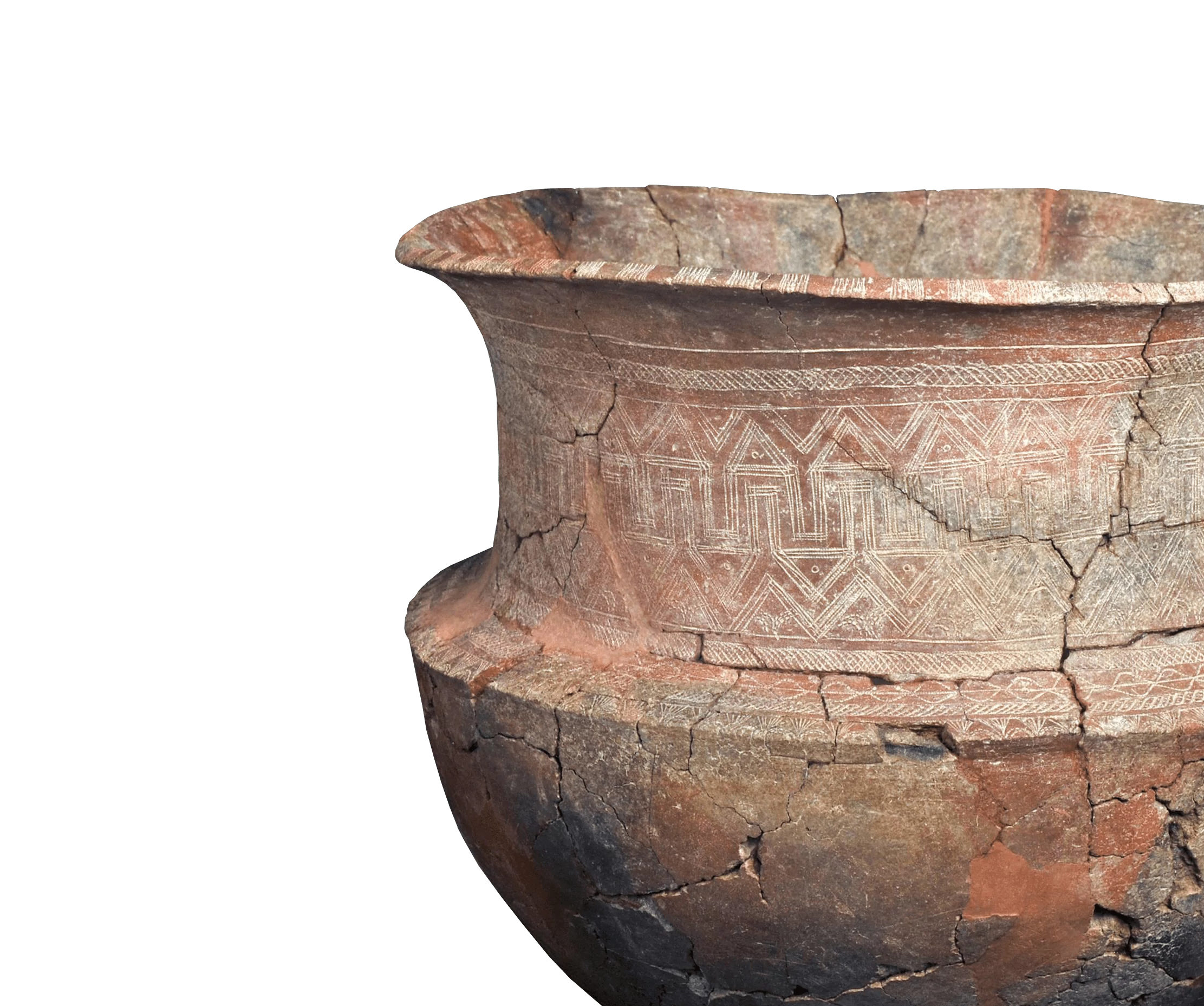Lapita Expansion
History's greatest navigators, and the beautiful vessels they left behind


The cultures of the pacific ocean are spread across nearly a third of the earth’s surface. These cultures were wildly diverse—inhabiting more than 20,000 islands, speaking 1800 languages, and practicing hundreds of distinct artistic traditions. Art in oceania was part of daily life—a fluid, often ephemeral practice. Creators worked in wood and stone, feathers, hair, flowers, and spider webs, and the objects and figures they created served many functions from the mundane to the spiritual. Once their purpose had been served, many were ritually destroyed.
Humans first migrated south from southeast Asia between 40 to 60 thousand years ago, settling the southern Asian islands, Australia and New Guinea. From there they expanded east into Melanesia, populating the archipelago by 30,000 BCE. In Australia, descendants of the first migrants left rock paintings dating to up to 50,000 years ago. Pacific oceanic cultures had thriving art practices as well—through in perishable wood, plant fiber and pigments that have long since disappeared.
A second wave of migration from Southeast Asia swept through the pacific around 5000 BCE, integrating with or ousting the existing communities. By 1500 BCE these new arrivals consolidated into a culture now called the Lapita, so named by anthropologist Edward W. Gifford, after mishearing xapeta'a “the place where one dig’s”—a local’s reference to the beach where the distinct style of pottery was first uncovered. Regardless of our incorrect nomenclature, the Lapita kept expanding. Around 1000 BCE they traveled beyond the Solomon Islands, the furthest settled region at the time, and reached Fiji, Tonga and Samoa. By 100 CE the intrepid navigators had settled the eastern pacific, and in the next 500 years inhabited Hawaii and Rapa Nui. A strong thread of visual tradition runs from the rare fragments of Lapita ceramics and rock art through to the Polynesian and Pacific Oceanic cultures of today. Geometric patterning, elongated and stylized human and animal forms, most famously seen in the mysterious Moai heads of Rapa Nui, or Easter Island.
Few tangible artifacts remain from the Lapita peoples, but in recent years their exquisitely decorated pottery has been unearthed in many locations including Viti Levu Island in the Republic of Fiji, Taumako, the largest of the Duff Islands, and their namesake Lapita beach in the northern Koné commune of New Caledonia. The Fiji sherds (fragments of ceramics) came from vessels of many sizes, pots, cups, serving dishes and more, and were identified as Lapita in part by their dentate stamp markings, a comb-like tool pressed into wet clay to create complex patterns, and in part by the repeated motif of human faces and dancing figures—iconography that influences oceanic art to this day.
The most dramatic Lapita finds came from the only known Lapita burial site called Teouma, on Efate Island in Vanuatu. Discovered in 2004, the funerary complex contained the remains of 80 individuals, and provided a rare glimpse into the rituals of the Lapita people. Burial was apparently a fluid process, with bones of the deceased often moved. The skulls of all individuals had been removed, and only seven discovered over the course of the excavation. One found in an elaborately decorated jar, and quite mysteriously, three more were found placed on the chest of the body of an elderly male, presumably a chief, or as Stuart Bedford, archaeologist with Australian National University in Canberra, put it “clearly an important dude.”
...
Got questions, comments or corrections about Lapita Expansion? Join the conversation in our Discord, and if you enjoy content like this, consider becoming a member for exclusive essays, downloadables, and discounts in the Obelisk Store.